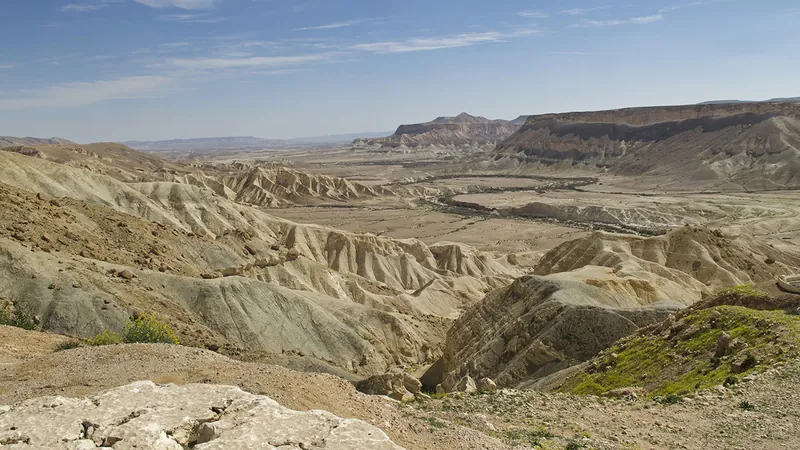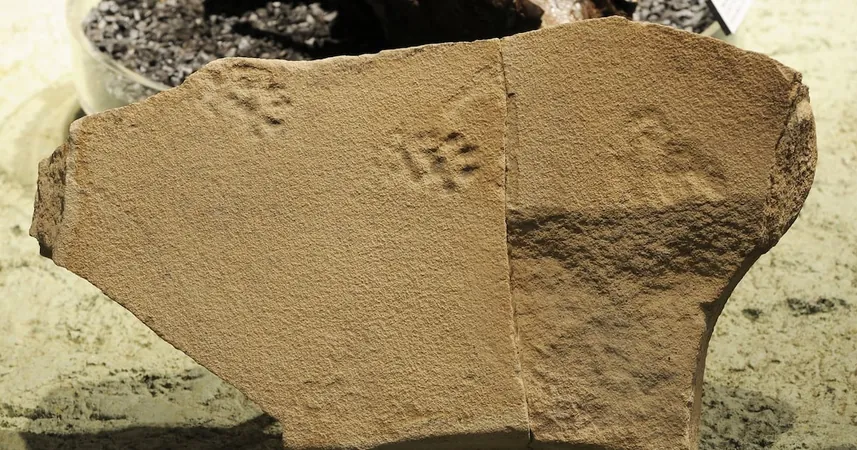
Climate Change Sparks Dramatic Shifts in Water Flow: New Study Reveals
2025-04-14
Author: Benjamin
Unveiling the Mystery of Drainage Divide Movement
A groundbreaking study has unveiled how drainage divides—the geographical lines determining how water flows across landscapes—can rapidly shift when climate conditions change. In the arid terrain of Israel's Negev Desert, researchers have documented significant alterations in the flow of water in response to periods of increased rainfall.
A Deep Dive into the Research
Employing field observations, sediment dating, and sophisticated numerical modeling, the research team discovered that these drainage divides, which previously moved at a snail's pace of just 1.1 kilometers per million years, experienced sudden bursts of movement tied to wet climatic events. During the study, researchers observed the drainage divide's migration, notably during two wet intervals spanning from 245,000 to 183,000 years ago and again from 36,000 to 26,000 years ago, when the divide shifted at double its usual pace.
The Significance of Drainage Divide Migration
Mikaël Attal, a geomorphologist at the University of Edinburgh, praised the study for directly measuring drainage divide migration rates for the first time. He pointed out that understanding this migration is crucial for grasping landscape erosion, interpreting tectonic processes, and effectively managing water resources. Water from one side of a divide flows to different destinations; for instance, a raindrop falling on the Great Divide in North America heads either to the Pacific or the Atlantic based on its location.
Innovative Techniques for Unraveling the Past
The researchers overcame challenges in determining drainage divide migration rates by focusing on well-preserved river terraces in the dry Negev Desert. Using optically stimulated luminescence, they dated each terrace, which serves as a historical record of past divide positions. By piecing together these dates, they tracked a migration of 258 meters over the past 227,000 years, revealing the divide's swift movements during wetter climatic phases.
Climate Connections: Erosion, Water, and Landscape Changes
The study highlighted how the southern Negev Desert's mostly dry climate has been interspersed with wet periods, marked by extreme storms and increased groundwater recharge. By simulating river incision processes, researchers confirmed that climate shifts—not constant conditions—explain the rapid rates of drainage migration observed. This discovery underscores the interplay between climate dynamics and landscape evolution.
Implications for the Future Amid Climate Change
As extreme weather events intensify due to climate change, the findings of this research gain heightened relevance. Attal warns that landscapes may be particularly sensitive to these changes, with severe flooding potentially redirecting rivers and permanently altering drainage divides. Understanding these shifts is more crucial than ever, as they could reshape our landscapes in the face of increasing climate volatility.
Final Thoughts
This innovative study contributes crucial insights into the nexus of climate change and geomorphology, providing a clearer context for how our landscapes may evolve as climate conditions fluctuate.









 Brasil (PT)
Brasil (PT)
 Canada (EN)
Canada (EN)
 Chile (ES)
Chile (ES)
 Česko (CS)
Česko (CS)
 대한민국 (KO)
대한민국 (KO)
 España (ES)
España (ES)
 France (FR)
France (FR)
 Hong Kong (EN)
Hong Kong (EN)
 Italia (IT)
Italia (IT)
 日本 (JA)
日本 (JA)
 Magyarország (HU)
Magyarország (HU)
 Norge (NO)
Norge (NO)
 Polska (PL)
Polska (PL)
 Schweiz (DE)
Schweiz (DE)
 Singapore (EN)
Singapore (EN)
 Sverige (SV)
Sverige (SV)
 Suomi (FI)
Suomi (FI)
 Türkiye (TR)
Türkiye (TR)
 الإمارات العربية المتحدة (AR)
الإمارات العربية المتحدة (AR)